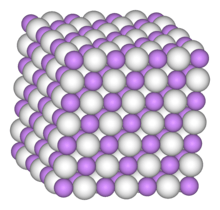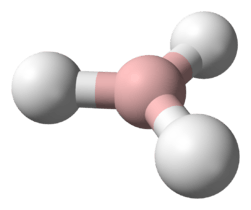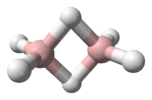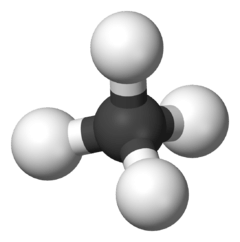Heptane
Heptane or n-heptane is the straight-chain alkane with the chemical formula H3C(CH2)5CH3 or C7H16, and is one of the main components of gasoline (petrol). When used as a test fuel component in anti-knock test engines, a 100% heptane fuel is the zero point of the octane rating scale (the 100 point is 100% iso-octane). Octane number equates to the anti-knock qualities of a comparison mixture of heptane and isooctane which is expressed as the percentage of isooctane in heptane and is listed on pumps for gasoline (petrol) dispensed globally.
 | |
 | |
 | |
| Names | |
|---|---|
| IUPAC name
Heptane[1] | |
| Other names
Septane[2] | |
| Identifiers | |
3D model (JSmol) |
|
| 1730763 | |
| ChEBI | |
| ChEMBL | |
| ChemSpider | |
| EC Number |
|
| 49760 | |
| MeSH | n-heptane |
PubChem CID |
|
| RTECS number |
|
| UNII | |
| UN number | 1206 |
| |
| |
| Properties | |
| C7H16 | |
| Molar mass | 100.205 g·mol−1 |
| Appearance | Colourless liquid |
| Odor | Petrolic |
| Density | 0.6795 g cm−3[3] |
| Melting point | −90.549[3] °C (−130.988 °F; 182.601 K) |
| Boiling point | 98.38[3] °C (209.08 °F; 371.53 K) |
| 0.0003% (20 °C)[4] | |
| log P | 4.274 |
| Vapor pressure | 5.33 kPa (at 20.0 °C) |
Henry's law constant (kH) |
12 nmol Pa−1 kg−1 |
| -85.24·10−6 cm3/mol | |
Refractive index (nD) |
1.3855[3] |
| Viscosity | 0.389 mPa·s[5] |
| 0.0 D | |
| Thermochemistry | |
Heat capacity (C) |
224.64 J K−1 mol−1 |
Std molar entropy (S |
328.57 J K−1 mol−1 |
Std enthalpy of formation (ΔfH⦵298) |
−225.2–−223.6 kJ mol−1 |
Std enthalpy of combustion (ΔcH⦵298) |
−4.825–−4.809 MJ mol−1 |
| Hazards | |
| GHS pictograms |     |
| GHS Signal word | Danger |
GHS hazard statements |
H225, H304, H315, H336, H410 |
| P210, P261, P273, P301+310, P331 | |
| NFPA 704 (fire diamond) | |
| Flash point | −4.0 °C (24.8 °F; 269.1 K) |
| 223.0 °C (433.4 °F; 496.1 K) | |
| Explosive limits | 1.05–6.7% |
| Lethal dose or concentration (LD, LC): | |
LC50 (median concentration) |
17,986 ppm (mouse, 2 hr)[6] |
LCLo (lowest published) |
16,000 ppm (human) 15,000 ppm (mouse, 30 min)[6] |
| NIOSH (US health exposure limits): | |
PEL (Permissible) |
TWA 500 ppm (2000 mg/m3)[4] |
REL (Recommended) |
TWA 85 ppm (350 mg/m3) C 440 ppm (1800 mg/m3) [15-minute][4] |
IDLH (Immediate danger) |
750 ppm[4] |
| Related compounds | |
Related alkanes |
|
Except where otherwise noted, data are given for materials in their standard state (at 25 °C [77 °F], 100 kPa). | |
| Infobox references | |
Uses
Heptane (and its many isomers) is widely used in laboratories as a non-polar solvent. As a liquid, it is ideal for transport and storage. In the grease spot test, heptane is used to dissolve an oil spot to show the previous presence of organic compounds on a stained paper. This is done by shaking the stained paper in a heptane solution for about half a minute.
Aqueous bromine may be distinguished from aqueous iodine by its appearance after extraction into heptane. In water, both bromine and iodine appear brown. However, iodine turns purple when dissolved in heptane, whereas the bromine solution remains brown.
Heptane is commercially available as mixed isomers for use in paints and coatings, as the rubber cement solvent "Bestine", the outdoor stove fuel "Powerfuel" by Primus, as pure n-heptane for research and development and pharmaceutical manufacturing and as a minor component of gasoline.
Heptane is also used as an adhesive remover by stamp collectors. Since 1974, the United States Postal Service has issued self-adhesive stamps that some collectors find difficult to separate from envelopes via the traditional method of soaking in water. Heptane-based products like Bestine, as well as limonene-based products, have become popular solvents for removing stamps more easily.[7]
Octane rating scale
n-Heptane is defined as the zero point of the octane rating scale. It is a lighter component in gasoline, burns more explosively, causing engine pre-ignition (knocking) in its pure form, as opposed to octane isomers, which burn more slowly and give less knocking. It was originally chosen as the zero point of the scale because of the availability of very high purity n-heptane, unmixed with other isomers of heptane or other alkanes, distilled from the resin of Jeffrey pine and from the fruit of Pittosporum resiniferum. Other sources of heptane and octane, produced from crude oil, contain a mixture of different isomers with greatly differing ratings, and do not give as precise a zero point.
Isomers and enantiomers
Heptane has nine isomers, or eleven if enantiomers are counted:
- Heptane (n-heptane), H3C–CH2–CH2–CH2–CH2–CH2–CH3,
- 2-Methylhexane (isoheptane), H3C–CH(CH3)–CH2–CH2–CH2–CH3,
- 3-Methylhexane, H3C–CH2–C*H(CH3)–CH2–CH2–CH3 (chiral),
- 2,2-Dimethylpentane (neoheptane), H3C–C(CH3)2–CH2–CH2–CH3,
- 2,3-Dimethylpentane, H3C–CH(CH3)–C*H(CH3)–CH2–CH3 (chiral),
- 2,4-Dimethylpentane, H3C–CH(CH3)–CH2–CH(CH3)–CH3,
- 3,3-Dimethylpentane, H3C–CH2–C(CH3)2–CH2–CH3,
- 3-Ethylpentane, H3C–CH2–CH(CH2CH3)–CH2–CH3,
- 2,2,3-Trimethylbutane, H3C–C(CH3)2–CH(CH3)–CH3, this isomer is also known as pentamethylethane and triptane.[8]
Preparation
The linear n-heptane can be obtained from Jeffrey pine oil.[9] The six branched isomers without a quaternary carbon can be prepared by creating a suitable secondary or tertiary alcohol by the Grignard reaction, converting it to an alkene by dehydration, and hydrogenizing the latter.[9] The 2,2-dimethylpentane isomer can be prepared by reacting tert-butyl chloride with n-propyl magnesium bromide.[9] The 3,3-dimethylpentane isomer can be prepared from tert-amyl chloride and ethyl magnesium bromide.[9]
Health risks
Acute exposure to heptane vapors can cause dizziness, stupor, incoordination, loss of appetite, nausea, dermatitis, chemical pneumonitis, or unconsciousness, possible peripheral neuropathy.[10]
References
- "n-heptane – Compound Summary". PubChem Compound. USA: National Center for Biotechnology Information. 16 September 2004. Identification and Related Records. Retrieved 2 January 2012.
- Hofmann, August Wilhelm Von (1 January 1867). "I. On the action of trichloride of phosphorus on the salts of the aromatic monamines". Proceedings of the Royal Society of London. 15: 54–62. doi:10.1098/rspl.1866.0018.
- Haynes, William M., ed. (2011). CRC Handbook of Chemistry and Physics (92nd ed.). Boca Raton, FL: CRC Press. p. 3.290. ISBN 1439855110.
- NIOSH Pocket Guide to Chemical Hazards. "#0312". National Institute for Occupational Safety and Health (NIOSH).
- Dymond, J. H.; Oye, H. A. (1994). "Viscosity of Selected Liquid n‐Alkanes". Journal of Physical and Chemical Reference Data. 23 (1): 41–53. doi:10.1063/1.555943. ISSN 0047-2689.
- "n-Heptane". Immediately Dangerous to Life and Health Concentrations (IDLH). National Institute for Occupational Safety and Health (NIOSH).
- Butler, Peter. "It's Like Magic: Removing Self-Adhesive Stamps from Paper" (PDF). American Philatelic Society. Retrieved 15 June 2020.
- Isomers. Members.optushome.com.au. Retrieved on 2012-03-04.
- Graham Edgar, George Calingaert, and R. E. Marker (1929): "The preparation and properties of the isomeric heptanes. Part I. Preparation". Journal of the American Chemical Society, volume 51, issue 5, pages 1483–1491. doi:10.1021/ja01380a027
- Patty, FA; Yant, WP (1929). "Odor intensity and symptoms produced by commercial propane, butane, pentane, hexane, and heptane vapor". Report of Investigations. US Department of Commerce, U.S. Bureau of Mines. No. 2979 (December): 1–10.







